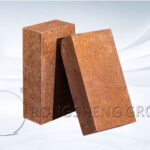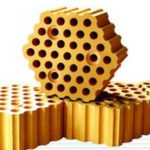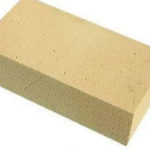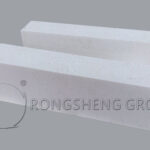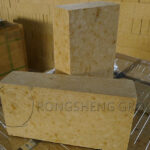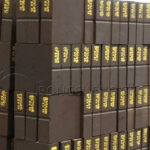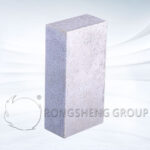According to the different raw materials and production processes, the magnesia-chrome bricks commonly used in the copper smelting industry can be divided into: ordinary silicate-bonded magnesia-chrome bricks; directly bonded magnesia-chrome bricks; rebonded magnesia-chrome bricks; semi-rebonded magnesia-chrome bricks; co-fired magnesia-chrome bricks; and fused-cast magnesia-chrome bricks. These six types of magnesia-chrome bricks have different thermal shock resistance and corrosion resistance.
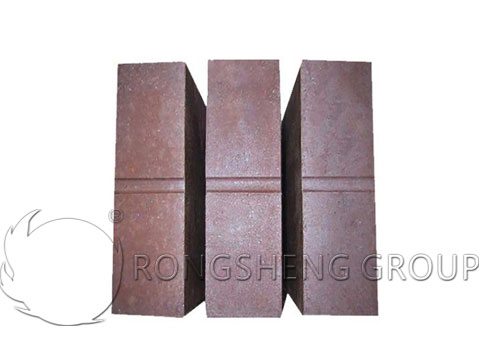
Thermal Shock Resistance and Corrosion Resistance of Magnesia-Chrome Bricks
Generally speaking, refractory materials cannot take into account both thermal shock resistance and erosion resistance at the same time.
Comparison of thermal shock resistance of magnesia-chrome bricks of different processes. Thermal shock resistance of different magnesia-chrome refractories. From the perspective of thermal shock resistance, silicate magnesia-chrome refractories are the best, directly bonded magnesia-chrome bricks are slightly inferior, and electro-melted and then bonded magnesia-chrome have slightly worse thermal shock resistance. The fully synthetic magnesia-chrome bricks perform well in terms of impact resistance, slightly inferior to directly bonded magnesia-chrome bricks, and better than electro-melted and then bonded magnesia-chrome bricks.
Different magnesia-chrome bricks have good resistance to converter slag erosion. The results of the erosion of various magnesia-chrome refractories by copper-nickel converter slag were studied using the rotary slag resistance test method. It can be seen that according to the different degrees of direct bonding, the slag resistance of magnesia-chrome bricks decreases as the degree of direct bonding decreases.
Based on the above results, it can be seen that excellent slag resistance and certain thermal shock resistance make fused-cast magnesia-chrome bricks have broad application prospects.
In the current pyrometallurgical copper smelting process, magnesia-chrome bricks are widely used in the whole process due to their excellent slag resistance. In the key parts of the converter blowing, electric melting and bonding magnesia-chrome or high chromium content direct bonding magnesia-chrome bricks are generally used. In the converter blowing, where there is strong thermal shock, direct magnesia-chrome bricks with good thermal shock resistance are generally used.
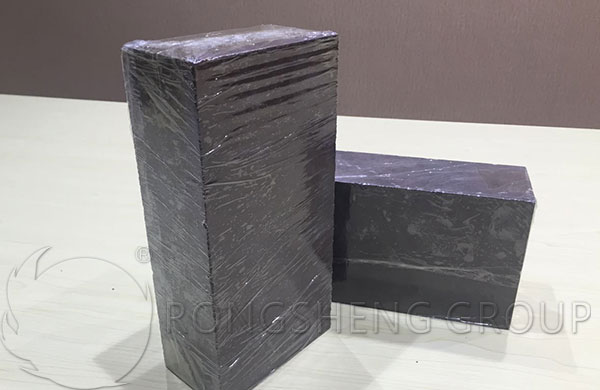
Problems in Directly Bonded Magnesia-Chrome Bricks
Magnesia-chrome bricks prepared by direct bonding have good properties and have successfully replaced magnesia-chrome bricks prepared by silicate bonding. They are widely used in the firing zone of cement kilns. However, there are also some problems in directly bonded magnesia-chrome bricks:
- (1) Magnesia-chrome bricks will react with cement clinker in the firing zone of cement kilns to produce low-melting substances. For example, at 1335℃, C12A7 will be generated. At 1395℃, C4AF will be generated. At 1500℃, CMS will be generated. At 1575℃, C3MS2 will be generated. Moreover, these low-melting-point mineral phases will penetrate deep into the refractory bricks, making it difficult to form a thick kiln skin layer on the surface of the refractory bricks. As a result, the chemical corrosion resistance of the refractory bricks will deteriorate and the application time will be shortened.
- (2) When the cement rotary kiln is in an oxidizing atmosphere, trivalent Cr3+ is oxidized to hexavalent Cr6+. Subsequently, the magnesia-chrome bricks will be severely corroded by sulfate, thereby converting Cr6+ compounds into water-soluble substances. These substances containing hexavalent chromium ions will be discharged to the outside through the use of refractory bricks and exhaust gas emissions. It is well known that hexavalent Cr6+ compounds are highly toxic, which will seriously pollute the environment, cause serious harm to organisms, and even cause cancer.
- (3) When the cement rotary kiln is in a reducing atmosphere, CO can react with the magnesia-chrome iron ore in the magnesia-chrome bricks to form magnesia-würzburgite. Moreover, if the reducing atmosphere inside the cement rotary kiln is converted into an oxidizing atmosphere, the internal structure of the refractory brick body will completely disintegrate, reducing the service life of the refractory bricks.
- (4) The kiln lining of cement kilns using magnesia-chrome bricks is mostly composed of dicalcium sulfate. When the kiln body cools, β-C2S turns into γ-C2S, causing the kiln lining to become powdery and eventually peel off, shortening the application time of magnesia-chrome bricks.
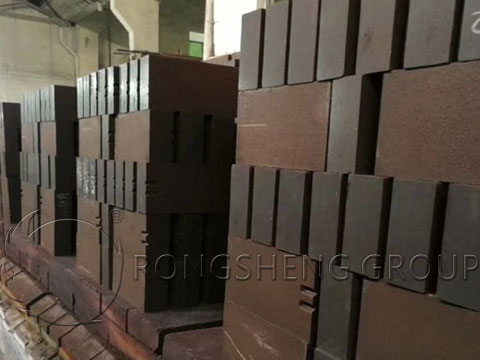
With the strengthening of environmental protection policies, people’s environmental awareness is also constantly improving, and it is required to stop using magnesia-chrome bricks worldwide. In response to this situation, a new idea of chromium-free refractory has been proposed. Although the chromium-free refractory of cement kiln has been proposed for many years, the chromium-free refractory bricks that can replace magnesia-chrome bricks have not yet been developed. Some researchers in the refractory industry have been changing the various properties of magnesia-chrome bricks in order to achieve the purpose of recycling materials, reducing the emission of harmful gases, and extending the service life.
- (1) The chromium content in the magnesia-chrome bricks used is required to be low.
- (2) After the magnesia-chrome bricks are recycled, secondary spinel crystals will form on the surface, thereby enhancing the strength of the castable, reducing the emission of waste magnesia-chrome bricks, and reducing the degree of environmental pollution.
- (3) Using relatively strong reducing substances such as FeSO4 and MnSO4 to react with the used magnesia-chrome bricks to convert the highly toxic Cr6+ into non-toxic refractory materials. However, this reduction method is not only costly but also complex in synthesis process, and cannot be put into large-scale industrial production.
- (4) By adding additives such as nano-Fe2O3, Al2O3, ZrO2, etc. to the magnesia-chrome brick, the high-temperature properties of the magnesia-chrome brick body can be enhanced, the binding energy of the material can be improved, sintering can be promoted, and the apparent porosity of the magnesia-chrome brick body can be reduced.
Analysis of the Performance of Different Chromium-Containing Raw Materials for Magnesia-Chrome Bricks
Chromium ore is composed of a composite spinel body (Mg, Fe)O·(Al, Fe, Cr)2O3 and gangue components (mainly MgO-SiO2 compounds). In the composite spinel body, Fe mainly exists in the form of Fe2+, and its impurity components are mainly MgO-SiO2. All SiO2 components in chromium ore exist as gangue, Fe2O3 and Al2O3 exist in the form of spinel, and chrome bricks with high Al2O3/Fe2O3 have high corrosion resistance.
MgO·Al2O3 spinel has a small thermal expansion coefficient, and its thermal shock stability is better than other chromium ores for Al2O3-rich chromium ores such as Xinjiang chromium ore. Xinjiang chromium ore has many microcracks and cleavages, and can also buffer thermal stress well. Pakistani chromium ore has a large grain size and less cleavage. Therefore, its ability to buffer thermal stress is worse than that of Xinjiang chromium ore, but its density is higher and its strength is greater than that of Xinjiang chromium ore. This is the reason why the chromium sources in magnesia-chrome bricks are mostly chromium ore from Xinjiang and Pakistan.


